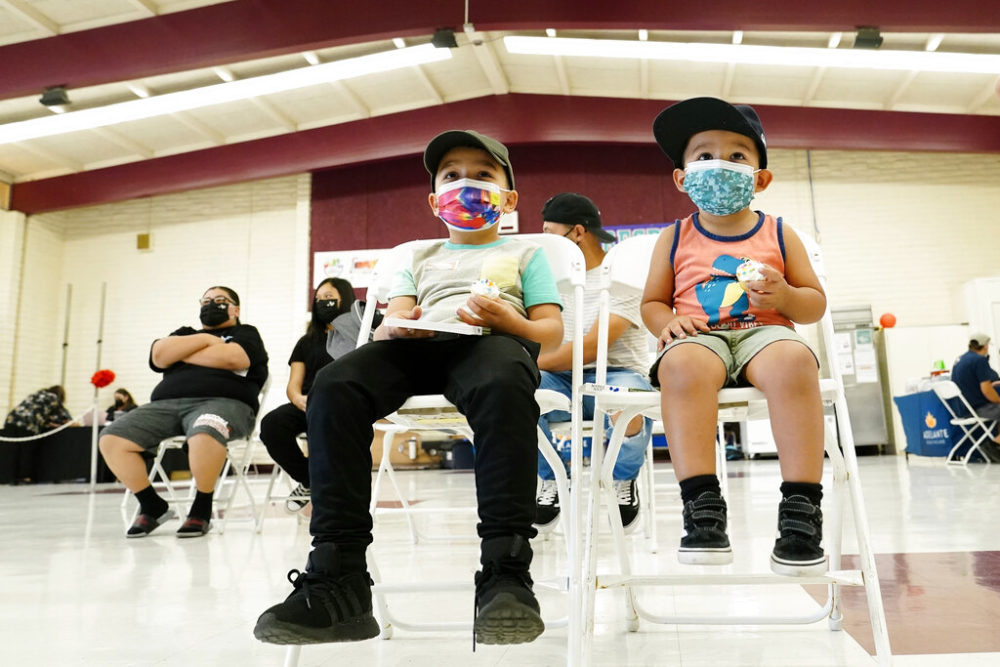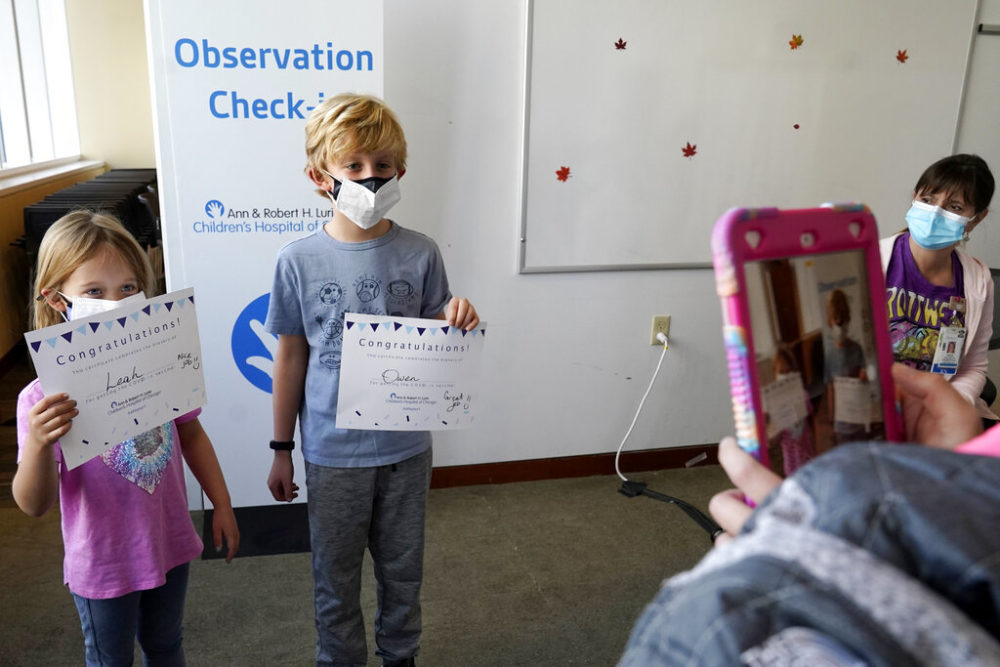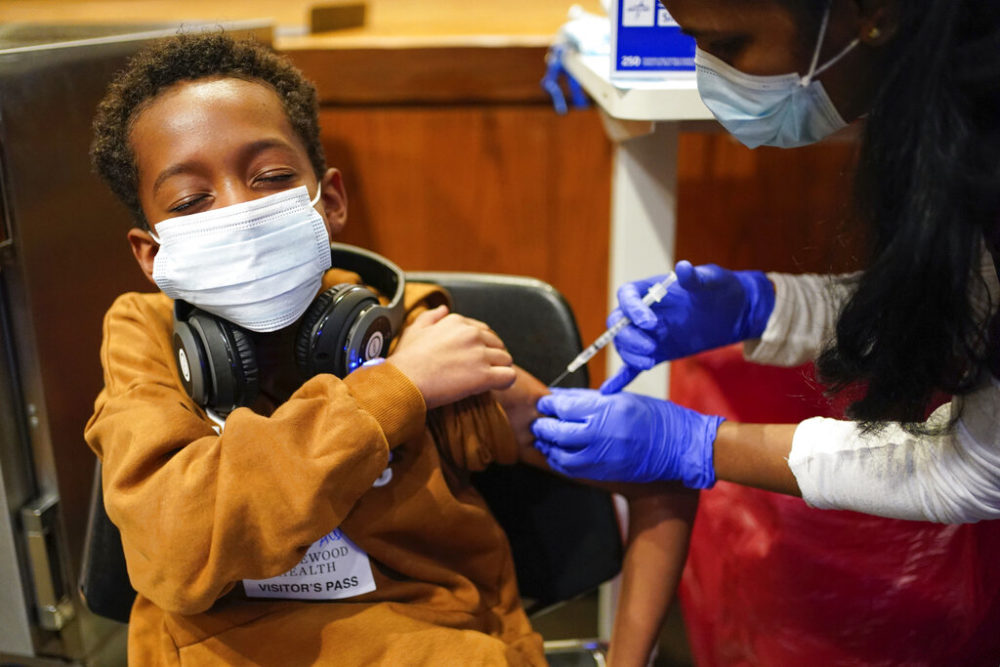The rollout of COVID-19 shots for elementary-age children has exposed another blind spot in the nation’s efforts to address pandemic inequalities: Health systems have released little data on the racial breakdown of youth vaccinations, and community leaders fear that Black and Latino kids are falling behind.
Only a handful of states have made public data on COVID-19 vaccinations by race and age, and the federal Centers for Disease Control and Prevention does not compile racial breakdowns either.
Despite the lack of hard data, public health officials and medical professionals are mindful of disparities and have been reaching out to communities of color to overcome vaccine hesitancy. That includes going into schools, messaging in other languages, deploying mobile vaccine units and emphasizing to skeptical parents that the shots are safe and powerfully effective.
Public health leaders believe racial gaps are driven by work and transportation barriers, as well as lingering reluctance and information gaps. Parents who do not have transportation will have a harder time getting their children to and from appointments. Those who do not have flexible work schedules or paid family leave may delay vaccinating their kids because they will not be able to stay home if the children have to miss school with minor side effects.
Statistics are scarce
In the few places that do report child COVID-19 vaccines by race, the breakdowns vary.
In Michigan, Connecticut and Washington, D.C., white children got vaccinated at much higher rates than their Black counterparts. But in New York City, white children between 13 and 17 are vaccinated at lower rates than Black, Latino and Asian kids.
In Connecticut, vaccination rates for 12- to 17-year-olds in many wealthy, predominantly white towns exceed 80%.
In Hartford, 39% of children between 12 and 17 are fully vaccinated. Across the city line in the suburb of West Hartford, 88% of children the same age are fully vaccinated, according to state data updated in November.
Hartford’s school system is 80% Black and Latino. West Hartford’s schools are 73% white.
Parents’ perspectives
On Monday morning, parents who dropped off their children at a diverse Hartford elementary school provided a glimpse into the various opinions around child COVID-19 vaccinations. The school’s enrollment is more than 75% Latino, Black and Asian.
Some expressed mistrust of the vaccines and had no plans to get their children vaccinated. Others were completely on board. One father was skeptical at first, but said communications from the school persuaded him of the benefits of vaccinations for students, including an end to the disruptions to in-person learning.
Ed Brown said his 9-year-old son will be vaccinated because the boy’s mother feels strongly about it, even though he still has some reservations. One result of the shot becoming available for his son, Brown said, is that he will get vaccinated himself.
“I will not give my son something I don’t know is safe,” said Brown, who is Black.

Ross D. Franklin,/AP
Oliver Estrada, 5, front left, waits with his brother Adriel, 2, after Estrada received the first dose of the Pfizer COVID-19 vaccine at an Adelante Healthcare community vaccine clinic at Joseph Zito Elementary School, Nov. 6, 2021, in Phoenix.
Another parent, Zachary Colon, said she was determined not to have her children vaccinated.
“I’m not vaccinating my son,” she said. “I read it got FDA approval really quickly. I’m afraid they don’t know enough about it.”
Leslie Torres-Rodriguez, the superintendent of Hartford schools, said the low vaccination rate among her students means more of them end up missing school.
If vaccinated students are exposed to infected people, they can come to school as long as they are not showing symptoms. Unvaccinated students have to test negative in order to return immediately.
“That can become another barrier for some of our families. Some of our families, for a variety of reasons, they don’t get the test, and so they have to wait out the seven to 10 days. And so absolutely, it has kept students home,” she said.
In Washington, lingering reluctance in the Black community has been mirrored in low vaccination rates among Black adolescents. The most recent numbers provided by the District of Columbia Department of Health show that the rate of full vaccination among Black children between 12 and 15 is just over half that of their white counterparts: 29 percent compared with 54 percent.
During a recent event to promote the start of vaccinations for children as young as age 5, Health Department Director Dr. LaQuandra Nesbitt acknowledged that reluctance has been difficult to overcome despite months of public campaigning in the nation’s capital.
“People have to want to be vaccinated,” she said. “It’s not always an access issue. It’s a choice issue.”
Clinic and government approaches
In Seattle, the Odessa Brown Children’s Clinic began hosting mobile clinics, offering in-home vaccinations and providing information in an array of languages to reach families who might otherwise not have gotten a shot for their kids. About 40% of the clinic’s patients are Black and 30% speak a language other than English, while 70% are on Medicaid.

Nam Y. Huh,/AP
Leah Malloy, 6, left, and her brother Owen Malloy, 9, take photos with the COVID-19 vaccine certificate after receiving the Pfizer COVID-19 vaccine for children 5 to 11 years as Lurie Children’s hospital registered nurse Jeanne Bailey, right, looks on at Lurie Children’s hospital Friday, Nov. 5, 2021, in Chicago.
Chicago’s public health department planned to expand its in-home vaccination program to ages 5 and up starting this week. Comer Children’s Hospital at the University of Chicago and the Loyola Medicine center west of Chicago both planned to send mobile pediatric vaccination units into underserved communities in the coming days.
The White House has made health equity a top priority, and its coronavirus task force said last week that the country has closed the racial gap among the overall population of 194 million people who are fully vaccinated. The Biden administration also said it is spending nearly $800 million to support organizations that seek to broaden vaccine confidence among communities of color and low-income Americans.
But federal, state and local systems for tracking public health data are still limited and underfunded, including tracking data for racial disparities in child vaccines, said Dr. Georges Benjamin, executive director of the American Public Health Association.
“We’ve not invested in the data system that we absolutely need to have for public health,” Benjamin said. “That is the fundamental failure of this system.”
Without widespread numbers on who is getting the shot, it’s difficult to know what disparities may exist, said Samantha Artiga, director of the racial equity and health policy program at the Kaiser Family Foundation.
“Data are key for getting a complete picture and understanding where disparities are present,” Artiga said. “They can be used to focus efforts and resources and then measure progress to addressing them over time.”
___
Associated Press data journalist Angel Kastanis and writer Ashraf Khalil contributed to this report.
___
Ma covers education and equity for AP’s Race and Ethnicity team. Follow her on Twitter: https://www.twitter.com/anniema15
___
The Associated Press’ reporting around issues of race and ethnicity is supported in part by the Howard Hughes Medical Institute’s Department of Science Education. The AP is solely responsible for all content.




























